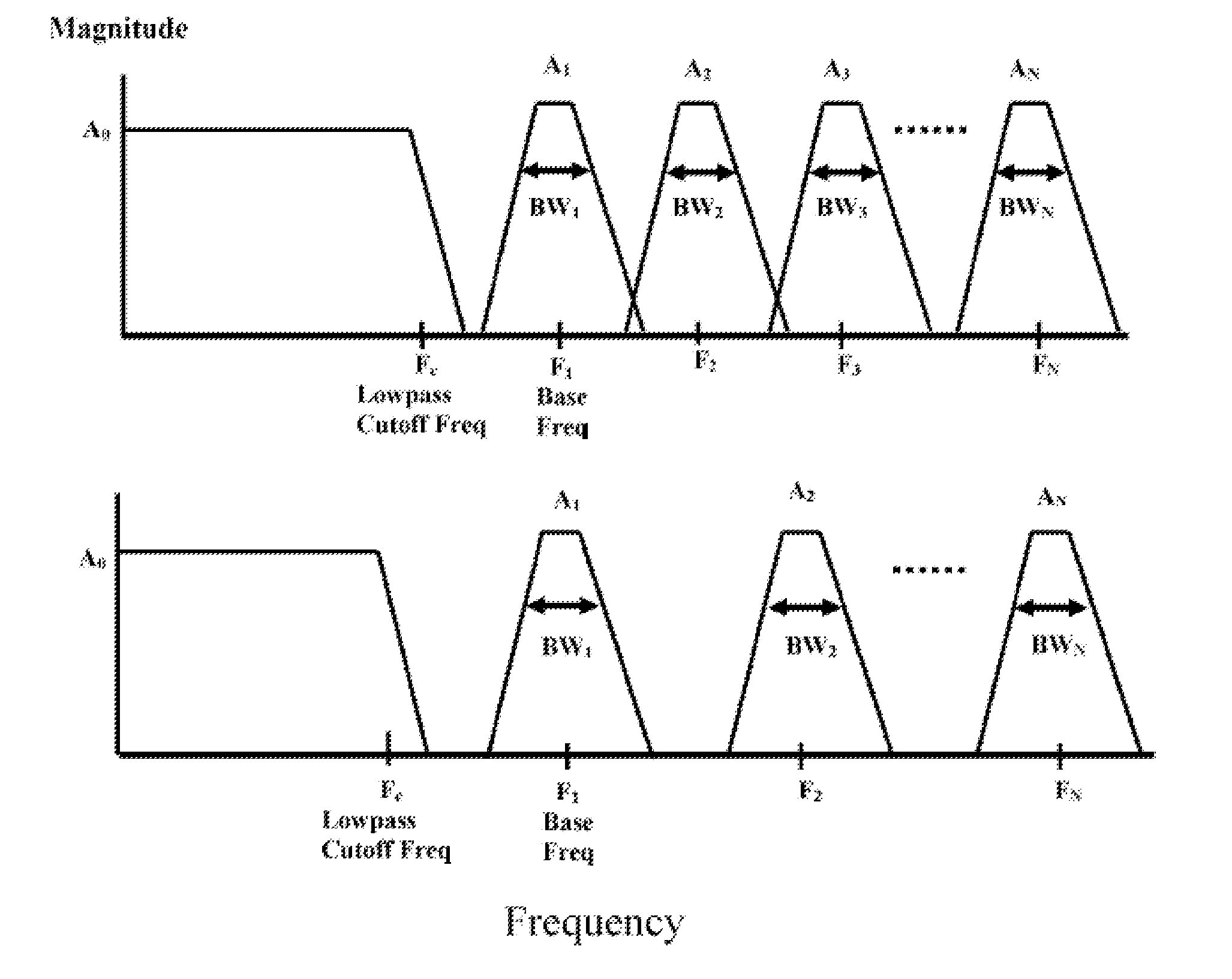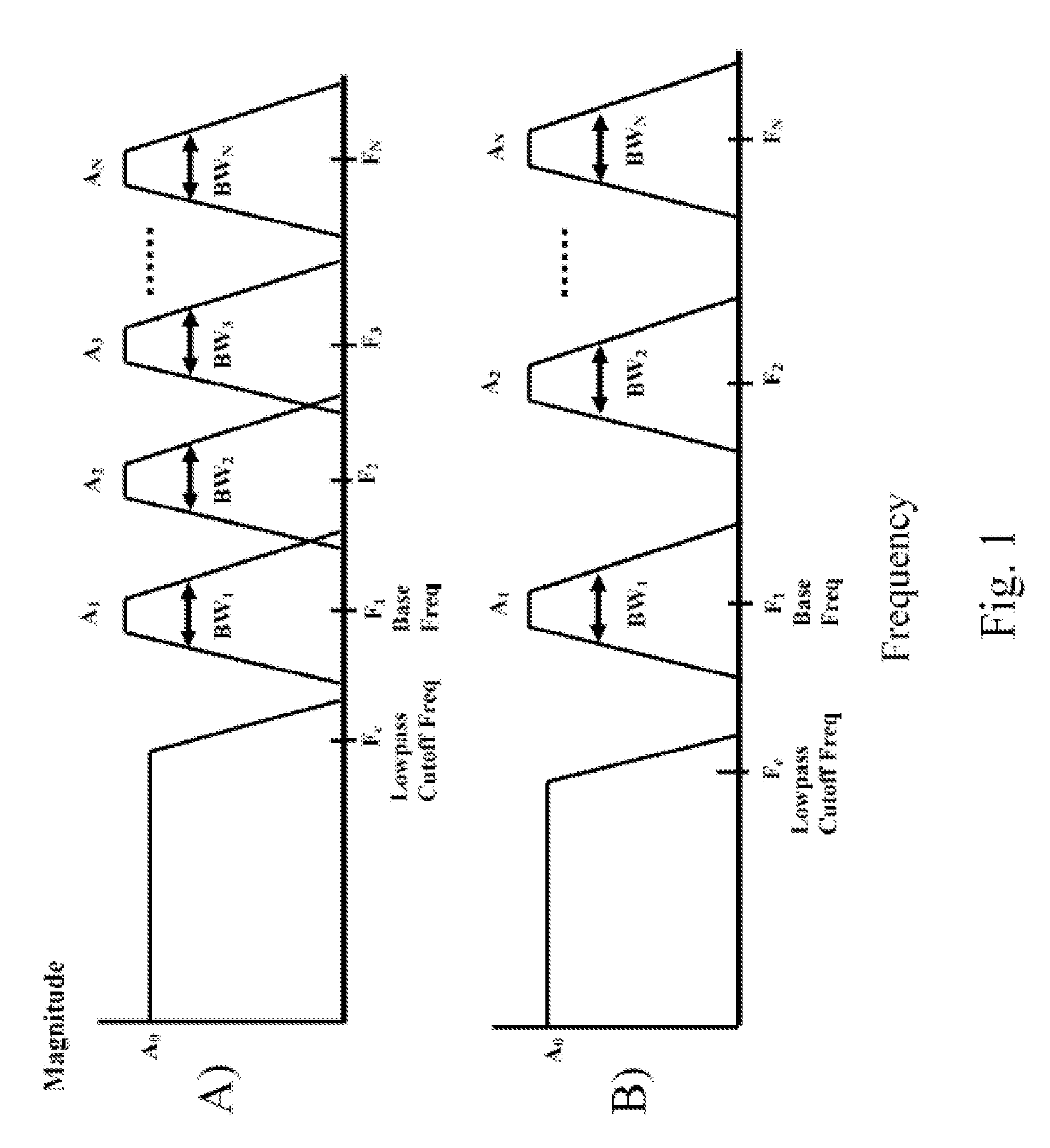Physiologically-Based Signal Processing System and Method
- Summary
- Abstract
- Description
- Claims
- Application Information
AI Technical Summary
Benefits of technology
Problems solved by technology
Method used
Image
Examples
Embodiment Construction
[0014] Referring now to the drawings, wherein like reference numerals refer to like parts throughout, there is seen in FIG. 1 a frequency response according to the linear signal-processing strategy of the present invention for improving hearing of a subject, such as a hearing impaired individual. Response (A) of FIG. 1 illustrates a system with a relatively low “sparseness” or spacing between the narrowband filters and relatively small spacing between lowpass filter and lowest frequency narrowband filter. Response (B) of FIG. 1 illustrates a system with higher “sparseness.” The process of the present invention thus comprises the steps of simultaneously applying a lowpass filter and a set of mid- to high-frequency narrowband filters to a signal so that only low frequencies and spaced apart bands of higher frequencies are presented to an individual.
[0015] At low sound levels, a healthy inner ear can be characterized as a bank of sharply tuned narrowband filters. An impaired ear, howe...
PUM
 Login to View More
Login to View More Abstract
Description
Claims
Application Information
 Login to View More
Login to View More - R&D
- Intellectual Property
- Life Sciences
- Materials
- Tech Scout
- Unparalleled Data Quality
- Higher Quality Content
- 60% Fewer Hallucinations
Browse by: Latest US Patents, China's latest patents, Technical Efficacy Thesaurus, Application Domain, Technology Topic, Popular Technical Reports.
© 2025 PatSnap. All rights reserved.Legal|Privacy policy|Modern Slavery Act Transparency Statement|Sitemap|About US| Contact US: help@patsnap.com


